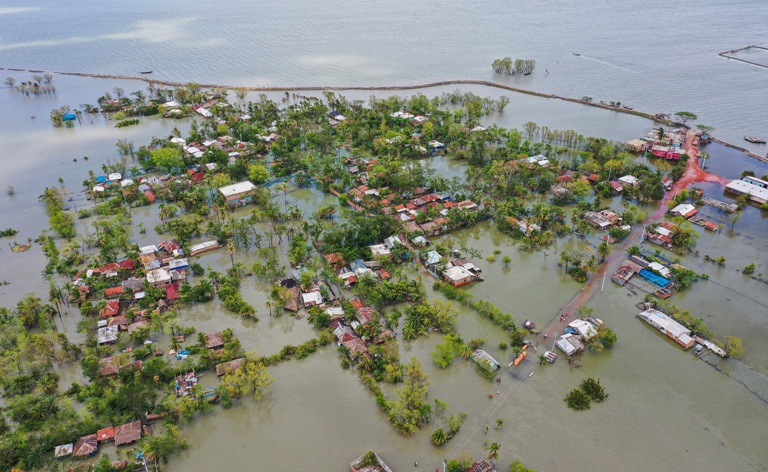
1.3m Bangladeshis to be affected by 2050
Reuters, Dhaka
Published:30 Apr 2021, 10:56 AM

1.3m Bangladeshis to be affected by 2050
Coastal area residents of Bangladesh leaving their habitat due to rising sea levels could trigger waves of migration across the country that will affect at least 1.3 million people by 2050, according to a new study.
A new mathematical model predicts the country's southern regions along the Bay of Bengal will be the first impacted by sea level rise, causing displacement that would eventually affect all of the nation's 64 districts.
Some migrants could displace existing residents, triggering further movement of people, said the study published by the American Geophysical Union, an international scientific group.
The population of Dhaka, a popular hub for migrants, is expected to shrink after an initial surge as residents seek to move away from an overburdened capital, researchers said.
With more than 600 million people at risk of being displaced by sea level rise in coastal regions worldwide in this century, researchers say their model could help countries prepare by ensuring cities are equipped to deal with an influx of migrants.
"The paper seeks to understand not only the immediate displacement due to sea level rise, but the cascading effects that their migration will trigger through the country," co-author Maurizio Porfiri told the Thomson Reuters Foundation on Wednesday.
"The model will initially tell you that Dhaka is the place to go, but ultimately, as the place gets overpopulated... people will have to distribute everywhere. So every place will get a fraction of the migrants."
Bangladesh, a country of more than 160 million, is a low-lying nation often included on lists of countries most at risk from the impacts of rising global temperatures, from more extreme storms to floods.
Last year, the nation witnessed flooding that lingered for an unusually long time and experts feared the economic impact was worsened due to job losses caused by the coronavirus pandemic.
The study's authors say their model can be used to assess migration trends caused by any kind of environmental disaster, from droughts and wildfires to earthquakes.
"Mathematical modelling is the only way we have to ground our future decisions," said Pietro De Lellis, an engineer at the University of Naples Federico II in Italy and the study's lead author, in a press release.
The study's model considers human behaviour, such as whether people are willing or able to leave home and if they later are likely to return there.
"(The study) has rightly focused on the complexity of human behaviour that is involved in the decision-making process of potential migrants," said Saleemul Huq, director of the Dhaka-based International Centre for Climate Change and Development.
"Towns in other parts of the country, besides Dhaka, need to prepare to receive climate migrants in the future."
Study on rising sea level